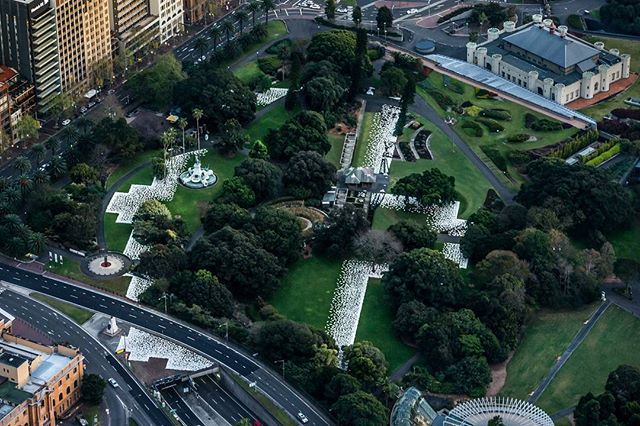Sydney’s Best Artists of 2016: Interviews with FBi SMAC Award Nominees
December 15th 2016
Jared Richards

Brendan Maclean performing at the FBi SMAC Awards 2014. Photo by Joel Carrett.
Introducing the nominees for Best Artist in the 2016 FBi SMAC Awards: the masterminds behind the installations and performances that stayed with us long after the exhibit closed.
From alternate reality dating apps to cross-cultural examinations, and mass installations that retrace forgotten moments in Indigenous history. These five artists represent the breadth of Sydney’s art community. If you’re not familiar with their work, consider this a crash-course in why they matter – and why we’ll be paying attention to whatever it is they do next.

Angela Tiatia, Walking The Wall, 2014, courtesy of Alcaston Gallery, Melbourne.
Angela Tiatia
Two people throw each other against a wall, again and again. Earlier this year, the visceral sound of bodies slapping echoed throughout Alaska Projects when Angela Tiatia performed Soft Power with artist James Nguyen. The sheer physicality – a continual rhythm and dance between two individuals – is an excellent introduction to the evocation of Angela’s work; feats of physicality based on the exploration of power – socio-political, cultural, sexual – often informed by her Samoan heritage.
Angela places her own and other bodies on the line. She takes you along with her, both live and in video performances like Holding On, where her floating body is engulfed by waves off Tuvalu, a Pacific island likely to be submerged by rising sea levels. Feminine strength, the weight of cultural expectations, the performance of rituals and the larger socio-political climate are all at play in Angela’s works, provoking and awaiting critique.
Listen to Angela discussing her work with Canvas:
- Canvas :: Interview with Angela Tiatia 28.8.16

Pero no cambia mi amor (But my love doesn’t change), Claudia Nicholson, performed as part of Women Of Fairfield on October 8, 2016. Photo courtesy of Anna Kucera/MCA.
Claudia Nicholson
Bogota born artist Claudia Nicholson’s body of artworks can be defined and categorised in two ways, speaking towards the way she considers her cultural heritage and the ways in which it can be accessed. On one side, there’s her alfombras de asseríns, or traditional South American sawdust carpets, constructed over hours-long performances. Perched on a plywood bridge above the carpet, Claudia carefully sprinkles dyed sawdust into patterns. On the other side, Claudia also incorporates gifs, music, performance and video into her artworks to play with contemporary Chola culture, squeezing each medium for what its worth for a bolder, glittery display.
In the past year, Claudia’s laid sawdust carpets at the MCA Artbar, safARI and MONA’S DARK MOFO festival, as well as working with local South American women for Pero no cambia mi amor (But my love doesn’t change), an artwork involving singing, carpets and self-portraits during the Women of Fairfield art installations.
Listen to Claudia chat with Canvas below, and read more about her work in this Art We Heart feature from last year.
- Canvas :: Interview with Claudia Nicholson 4.12.16

Ghenoa Gela, Fragments Of Malungoka – Women Of The Sea, photographed by Gregory Lorenzutti.
Ghenoa Gela
Ghenoa Gela isn’t interested in replicating tradition. For her dance Fragments Of Malungoka – Women Of The Sea, Ghenoa evokes her Torres Strait heritage without dictating it. Working with her dancers, she asked them to consider the traditional techniques and dance moves, not by imagining themselves as Torres Strait women, but by considering what dancing means to them. It’s a more personal conception of identity, where Ghenoa’s own relationship to her heritage is represented via comparison, understood through distance. A GoPro strapped to a dancer’s stomach extends the idea, a projection of what she sees displayed on the back wall.
Ghenoa’s ability to involve the audience and participants in an intensely personal artwork is why Fragments won the 2016 Kier Choreography Award, a $40,000 biennial grant – who knows what she’ll do next.
Listen to Ghenoa discuss her work on Canvas:
- Canvas :: Interview with Ghenoa Gela 8.5.15

Giselle Stanborough, Lozein: Find the Lover You Deserve 2016, performance, website, animation, mixed media, courtesy Giselle Stanborough.
Giselle Stanborough
As founder and CEO of Lozein, Giselle Stanborough been busy. A matchmaking start-up in an alternate reality, Giselle recently presented a compelling and inspirational business conference at the MCA called Lozein: Find the Lover You Deserve. The lines between artist, motivational speaker and digital disruptor were discarded. On the MCA’s web page for Lozein, Giselle orchestrates an irritating pop-up to envelop the description of the “MCA website disruptions” you’re trying to read about. Surveillance, intimacy and connection are key themes in Giselle’s performances and artworks. Outside of Lozein, Giselle curated an hyper-sexual and ‘basic’ hen’s night as part of MCA’s ARTBAR and created monuments to tangled headphones – providing eerie and funny double takes in a double tap world.
Listen to Giselle dissect memes and discuss internet culture in her segment on Canvas:
- Canvas :: Giselle Stanborough interview 6.3.16

Aerial shot of barrangal dyara, Jonathan Jones, 2016. Photo by Peter Grieg.
Jonathan Jones
For the 32nd Kaldor Art Project, Wiradjuri/Kamilaroi man Jonathan Jones created barrangal dyara (skin and bones): a 20,000 sq m sculpture installation covering a corner of Sydney’s Royal Botanic Garden. In the installation, 15,00 ash-white shields traced the outline of the Garden Palace, a government building which burnt down in 1882 – as were the large catalogue of Indigenous cultural objects stored inside. Both a testament to Indigenous culture lost and renewed, Jonathan’s work is a balance of mourning and celebration, a reminder of how Indigenous culture and suffering may be erased from our collective, but how through resistance and reflection, it continues to grow – albeit, a little ashy.
For more, read our The Hanging feature on barrangal dyara, and listen to Alex Pye’s interview with Jonathan Jones below.
- Jonathan Jones :: Interview with Alex Pye
Feeling informed? Vote for your favourite in the FBi SMAC Awards now!





